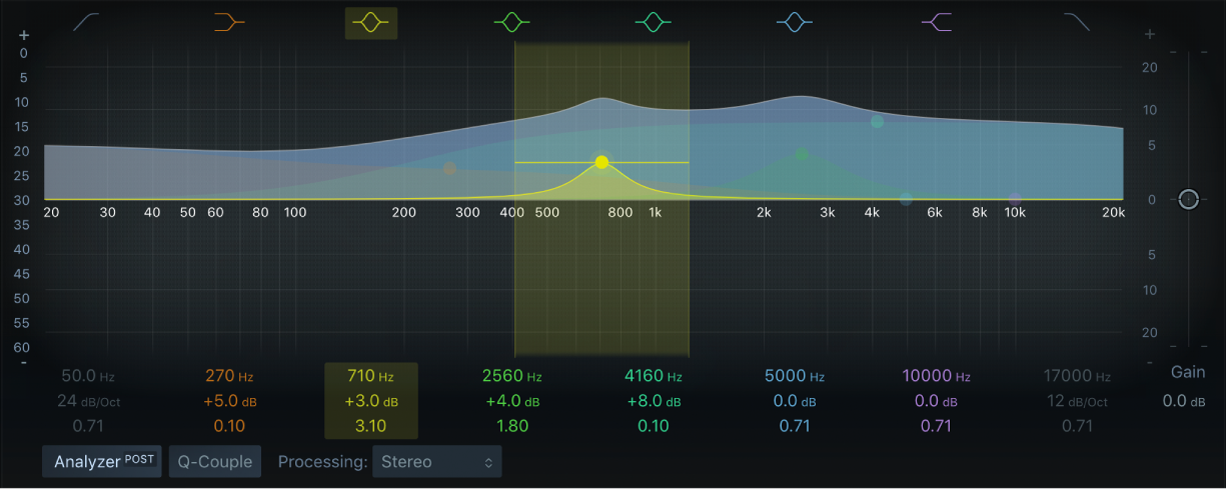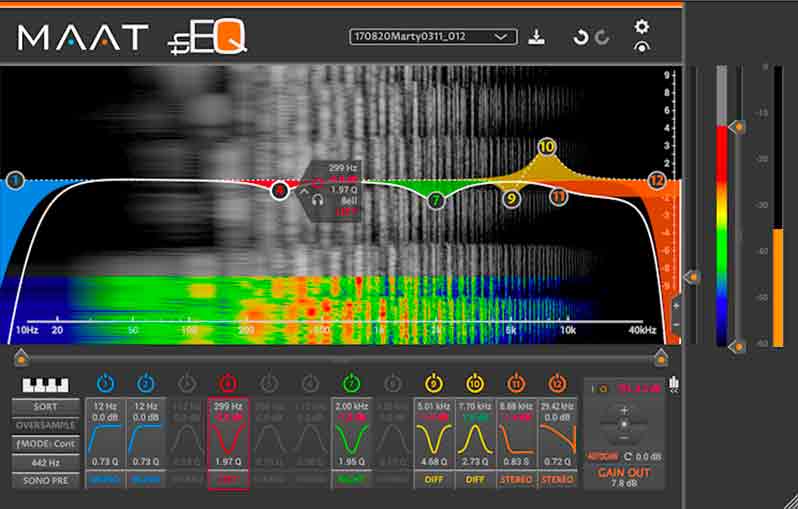

The Q can be used to narrow and widen, or to shape the affected area of the spectrum. The frequency is pretty obvious, it’s the point where all the action is happening. For each you can adjust the gain or slope, the frequency and the Q. The gain will boost or attenuate a given frequency and the slope will adjust the gradient (this will be illustrated further on). You have a choice of bands, each set at a different frequency.

The controls from one equaliser to another do not vary much. I will assume that you are familiar with what the frequency spectrum is, and have at least some experience of altering the tone of a sound using EQ. In simple terms, linear phase means the process that causes this artefact has been adjusted to generate less distortion, making it more suitable for mastering.

For now, let me just say that adjusting the controls on any EQ will project an artefact across the rest of the spectrum and can be perceived in the form of distortion. As this mastering tutorial is aimed at showing you how to achieve a professional finish with standard plugins, we’ll be leaving the hardware EQ’s (or analogue) for another time.īelow is an image of the linear phase EQ we shall use for demonstration – Logic’s own Linear Phase EQĪn explanation of the term ‘linear phase’ is probably a little beyond the level of the mastering tutorial at this stage. Essentially they all have the same goal of attenuating or boosting a specific band of frequencies chosen by the user. They can appear in either hardware or software form too.

As you can probably guess there are many different types – parametric, graphic, linear phase, passive and active. Whether you mix or master, operate live sound or configure PA systems, EQ is an absolute necessity to do your job. The process of tonal adjustment is mostly achieved using an EQ, something you’re probably familiar with already. EQ is possibly the most important tool in the box. You’ll be presented with an idea of where to start, and you’ll begin to clearly imagine the final sound of which you are trying to achieve when mastering your own, or other artist’s music. Throughout this chapter you will realise some of the very purposes of the mastering process. The next step is to explore the idea of shaping a track from a spectral point of view. The chapter ‘ What is Audio Mastering‘ should have given you a rough idea about what we are trying to achieve when mastering music.


 0 kommentar(er)
0 kommentar(er)
